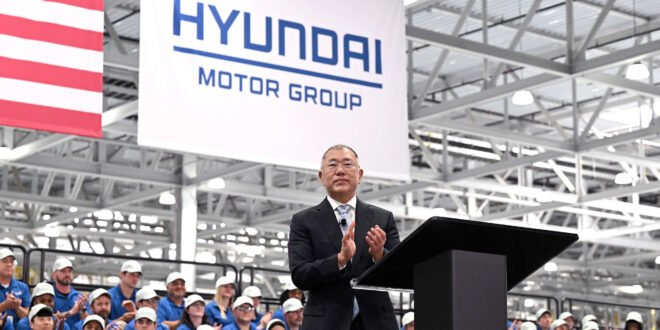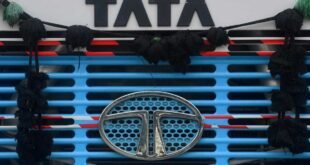Stellantis Faces Significant Financial Challenges
Stellantis, one of the leading automakers in Detroit and the parent company of well-known brands like Jeep and Chrysler, announced on July 21 that it anticipates a net loss of €2.3 billion for the first half of 2025. The company attributed this financial setback primarily to the resurgence of U.S. import tariffs. These tariffs are expected to significantly impact its annual earnings, potentially reducing them by between €1 billion and €1.5 billion.
This announcement signals the beginning of a challenging earnings season for global car manufacturers. The reimplementation of these tariffs under the previous administration has started to affect the financial performance of companies operating in the automotive sector. Stellantis, despite its strong presence in the U.S., is experiencing difficulties due to these trade measures, which suggests that foreign manufacturers, especially those from Asia, may face even more severe consequences.
South Korean Automakers at Risk
South Korean automakers, such as Hyundai Motor and Kia, are particularly vulnerable. These companies rely heavily on exports to the U.S. market, and their core customer base is more sensitive to price changes compared to premium European brands. As a result, the recent tariff increases could directly lead to lower sales volumes or reduced profit margins.
Hyundai and Kia are scheduled to release their second-quarter earnings reports on July 24 and 25, respectively. According to data from Seoul-based provider FnGuide, analysts predict an operating profit of 3.54 trillion won for Hyundai and 3 trillion won for Kia—each representing a decrease of approximately 17 percent compared to the same period last year.
The structure of South Korea’s auto industry further exposes it to tariff risks. In the previous year, Hyundai and Kia sold around 1.71 million vehicles in the U.S., but only 710,000 of these were produced locally. This localization rate of 42 percent is considerably lower than the 55 percent achieved by Toyota and Lexus, making Korean automakers more susceptible to trade barriers.
Impact on Parts Suppliers and Other Players
General Motors’ Korean subsidiary has also experienced challenges. Its exports dropped by 6 percent in the first half of 2025, with approximately 90 percent of these exports destined for the U.S. This highlights the immediate and significant impact of the tariffs on GM’s operations.
Parts suppliers are equally affected. South Korea exported a record amount of 11.42 trillion won worth of automotive components to the U.S. last year. Many of these suppliers are small and mid-sized manufacturers, raising concerns about potential ripple effects throughout the domestic economy.
Japanese and European Competitors Better Positioned
In contrast, Japanese automakers appear better equipped to handle the trade tensions. Toyota and Lexus sold 2.33 million vehicles in the U.S. last year, with over half of these units produced domestically. An industry official noted that Toyota even builds tens of thousands of Lexus units in the U.S., while Genesis production remains largely based in Korea.
European brands are less affected due to their premium positioning. Companies like BMW, Mercedes-Benz, Porsche, and Ferrari target high-end segments and have maintained double-digit operating margins for years. Their customers tend to be less price-sensitive, allowing them more flexibility to manage cost pressures.
Rising Pricing Pressures in the U.S. Market
With profit margins under pressure, pricing tensions are likely to escalate in the U.S. market. Most automakers have limited capacity to absorb additional costs and may be forced to pass them on to consumers.
Ford recently increased prices by up to $2,000 on three Mexico-built SUV models in May. Toyota followed with an average increase of $270 in early July. However, these price hikes still fall short of fully offsetting the burden imposed by the tariffs.
Hyundai and Kia Face a Crucial Decision
Hyundai Motor Group now stands at a critical juncture. Maintaining current prices could lead to further margin erosion, but passing on tariff-related costs might jeopardize the market share it has worked hard to build. The group’s U.S. market share has grown from 7.8 percent in 2019 to 10.9 percent in the first half of this year, achieving records in both 2022 and 2024.
The challenges faced by Hyundai and Kia reflect a broader reckoning for South Korea’s auto industry, affecting both carmakers and parts suppliers. Whether the sector can adapt to this new trade environment or suffer lasting damage will become clearer in the coming quarters.
 Info Malang Raya Its All About World News
Info Malang Raya Its All About World News



